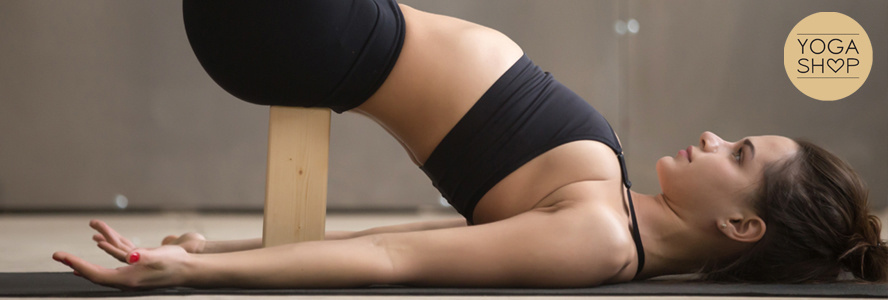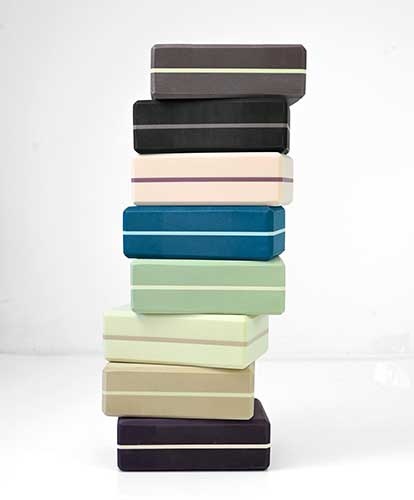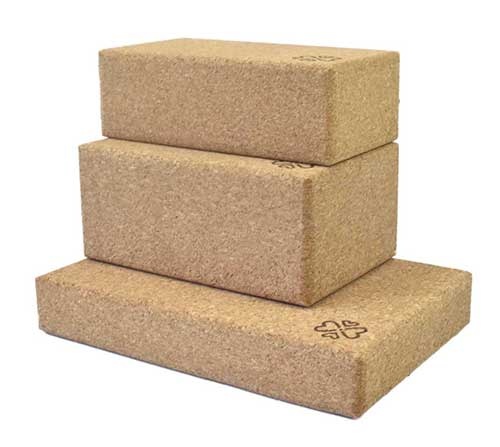Buying a Yoga Block: What to look out for?
A yoga block… it might seem like a simple tool, but there are surprisingly many types and sizes. So, how do you choose the right one? In this blog, you’ll discover everything you need to know about yoga blocks, so you can confidently choose the block that suits you best.
Planning to use a yoga block? Keep reading!
What is a Yoga Block?
A yoga block is a yoga prop designed to make yoga poses easier, safer, or more intense. It literally supports you in the pose and helps prevent injuries. A yoga block resembles a large brick but is made of soft and durable materials like foam or cork.
The best block for you depends on your needs, yoga style, and body type. Here’s what you need to know:
- What are the benefits of a yoga block?
- What’s the difference between foam and cork yoga blocks?
- Are there eco-friendly yoga blocks?
- What size yoga block do you need?
- When do you need two yoga blocks?
- Which yoga poses benefit from a block?
Why Use a Yoga Block?
A good yoga block provides support and stability in various poses and extends the reach of your arms. It’s helpful for poses where flexibility might still be a challenge, allowing you to practice with correct alignment.
- Support and Stability
Yoga blocks can bring the ground closer to you, offering extra stability and support in poses. For example, in Trikonasana (Triangle Pose), if you can’t yet reach your toes, a block helps you maintain stability. - Deeper Stretch
Blocks help you stretch deeper in poses without overstraining or losing balance. - Correct Alignment
Using a block ensures proper body alignment, reducing the risk of injury while enhancing the benefits of the pose. - Adapting Poses
Not everyone has the same flexibility or body type. Blocks make poses more accessible by providing customizable support. - Enhancing Breathing
Blocks create comfortable seated positions for breathing exercises (Pranayama), allowing you to focus on deep, sustained breathing. - Restorative Support
In Yin or restorative yoga, blocks provide essential support for relaxing poses like Savasana or gentle backbends. Yoga blocks are often used here in combination with yoga bolsters, blankets and pillows. - Progressive Improvement
As your strength and flexibility improve, you can gradually reduce block height to deepen your poses.
Blocks are invaluable for beginners and advanced yogis alike, helping refine and elevate your practice.
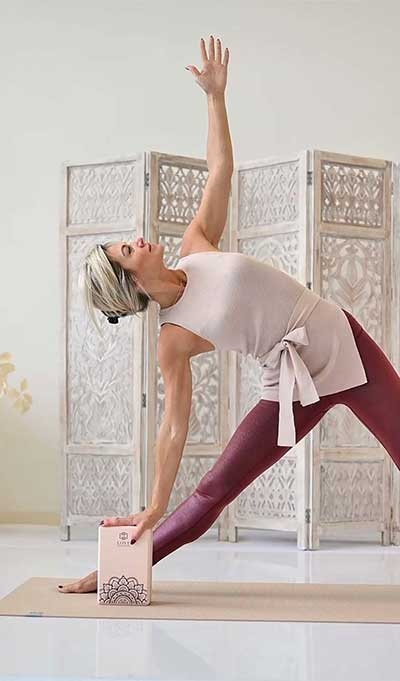
Cork Yoga Blocks vs. Foam Yoga Blocks
|
|
|
|
|
|
|
|
Advantages of Cork Blocks
- Eco-friendly and durable
- Provides stability for balance poses
- Less portable due to weight
Advantages of Foam Blocks
- Lightweight and easy to carry
- Comfortable for restorative poses
- Less eco-friendly, but some are made from recycled materials
Are There Eco-Friendly Yoga Blocks?
Not all yoga blocks are sustainable, so it’s essential to choose wisely.
The most eco-friendly blocks are made from 100% natural materials like cork, free of chemical additives. Love Generation offers a wide range of eco-friendly cork yoga blocks.
Prefer foam blocks? Ensure they are durable enough to last, so they won’t end up in the recycling bin too soon. Love Generation's foam yoga blocks are high-quality, wear-resistant, and tested to be free of heavy metals, phthalates, and other harmful substances.
What Size Yoga Block Do You Need?
Yoga blocks come in various shapes and sizes. The most commonly used block resembles a large brick, which is why they’re often called "yoga bricks." Most yogis opt for this standard type. For those who are taller or less flexible, an XL yoga brick may be a better choice.
Yoga blocks are never square—they always have three sides of different dimensions. This design allows you to adjust the block’s height by simply flipping it.
Tip: Start with the tallest side and gradually work towards using lower heights as your practice advances.
When Do You Need Two Yoga Blocks?
For most yoga styles, one block is sufficient. However, for Yin Yoga, it’s recommended to use two blocks.
- Two yoga Blocks for Yin Yoga
With two blocks, you can support multiple areas of your body simultaneously. By adjusting the blocks’ height, you can customize the support to suit your needs. - One Yoga Block for Beginners and Other Styles
For beginners, having your own block is helpful, especially for home practice. While studios often provide blocks, owning one ensures better hygiene and convenience.
Exceptions: In poses like Tolasana (Scale Pose) or Setu Bandha Sarvangasana (Bridge Pose), two blocks can be particularly useful.
Tip: Check out combo deals on our product pages to get two blocks at an attractive discount.
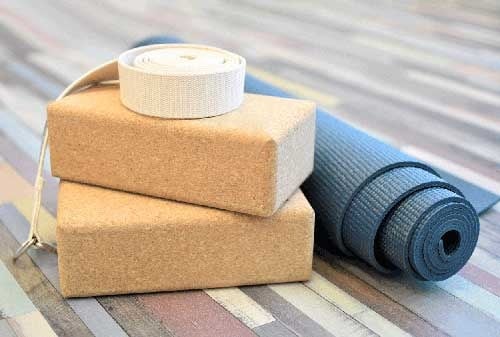
Which Yoga Poses Benefit from a Block?
Blocks can enhance countless yoga poses. Here are a few examples:
- Trikonasana (Triangle Pose): Helps bring the ground closer, allowing for better alignment and chest opening.
- Half Moon Pose: Provides stability and balance by elevating your hand closer to the ground.
- Bridge Pose: Supports the lower back in a supported bridge or aids arm extension.
- Squat Pose: Elevates the hips, making the posture more accessible.
- Camel Pose: Two blocks can help beginners reach the correct position by supporting the hands.
- Seated Poses: A block under the hips tilts the pelvis, making cross-legged or lotus positions more comfortable.
- Meditation: Ideal for shorter sessions; for extended meditations, a meditation cushion may be more comfortable.
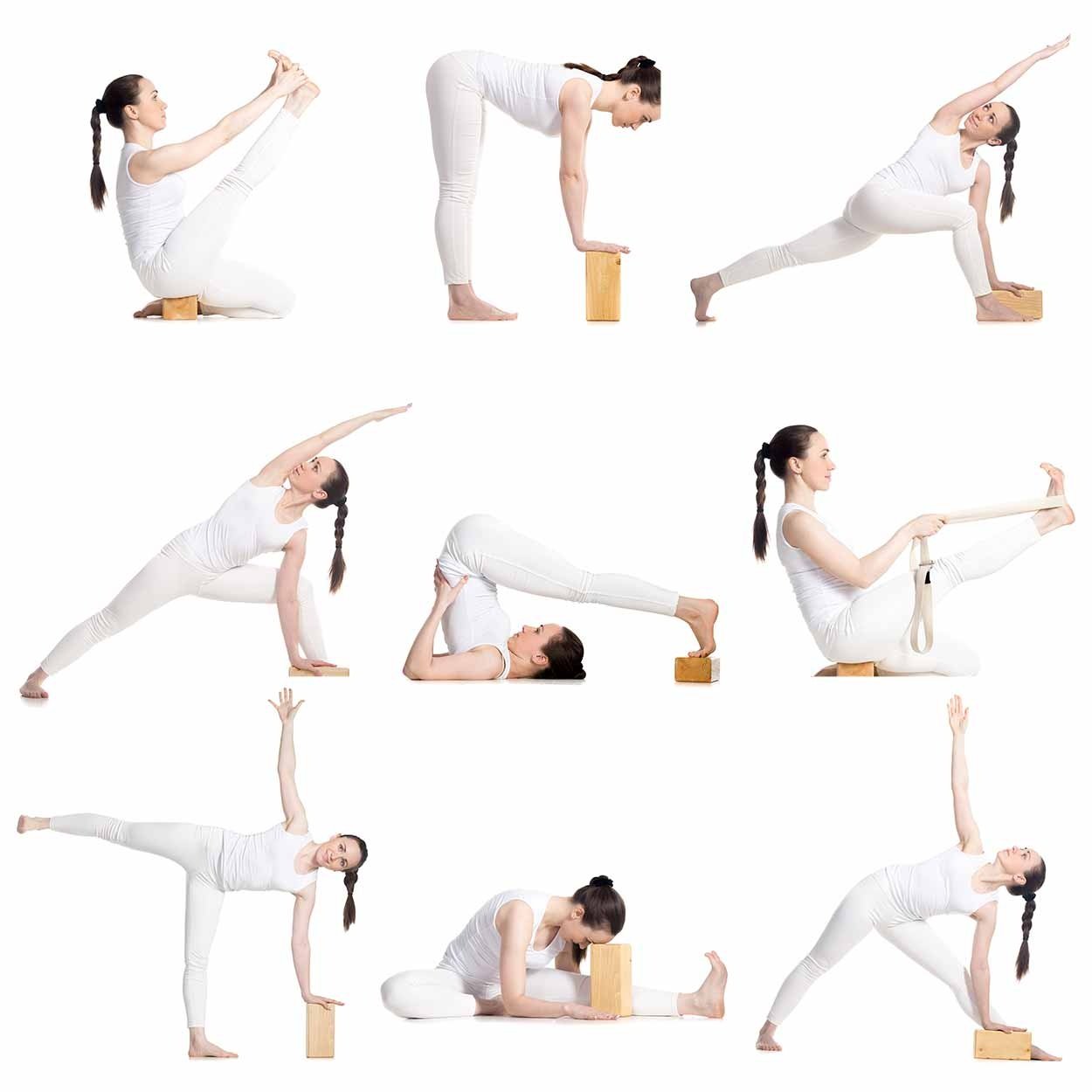
Which Yoga Block Will You Choose?
Have you decided yet? Will it be one block or two? Now you know everything about materials, sizes, and how to use yoga blocks. If you order your yoga block with us, it’ll be at your doorstep by tomorrow!



